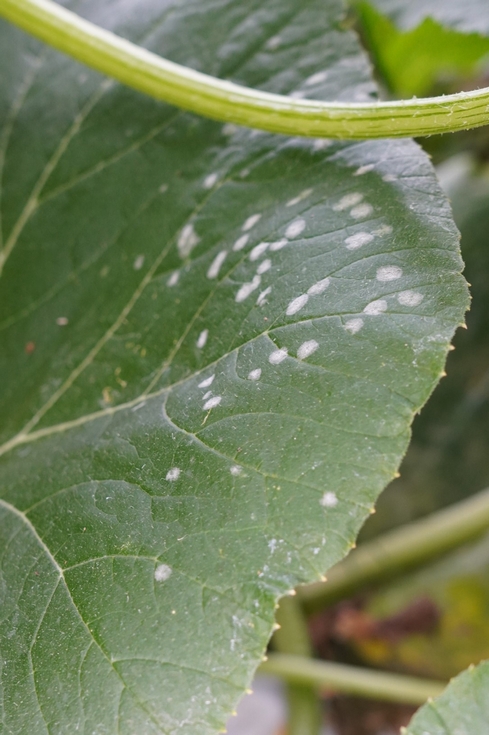| |
|
Entry Date
|
Nick Name
|
Location
|
|
Saturday, September 20, 2025
|

|
Matt D.
|
Connecticut
|
 |
Entry 67 of 105 |
 |
|
|
|
Powdery Mildew Tolerance
There is Powdery Mildew in this image, but there is more than meets the eye in this image.
Powdery mildew (PM) is a surface fungus that is air born, will land on an epidermis (outer covering of the plant) and if it determines the surface is a host it will begin to form a Haustorium (which is like a "root") that will enter the plant leaf and absorb nutrients. This allows it to grow conidia, form spores and has a tendency to spread across the leaf surface as a sheet. Powdery is actually inhibited by water and sunlight which is why early infections typically start on the underside of the leaves.
However, inspecting this leaf with a more technical eye, the white spores are concentrated in distinct circles that have not merged together despite multiple days of being on the leaf surface. Also, the underside of the leaf (not pictured) is essentially free of any noticeable PM colonies. Both of these traits are associated with a plant having powdery mildew tolerance, meaning it can naturally slow the proliferation of the powdery mildew.
These visual characteristics is what is often seen in field pumpkin varieties listed as PMR (Powdery Mildew Resistant)
When it comes to Giant Pumpkins, they are naturally more resistant/tolerant to many diseases, the issue is growing them to maximize production adds an additional stress. However, seeing the isolated PM colonies on the upper leaf surface, minimal infection on the underside of the leaves (where it typically starts and establishes itself) and having a reduce rate of spread strongly suggest this plant has some natural disease resistance to PM. While this may not be a trait that shows up on the scale, it can help to maintain plant health, so it has an indirect impact on the weight.
Diseases resistance are difficult traits to measure, but it can important as growers continue to try and maximize plant production.
|
|
|



